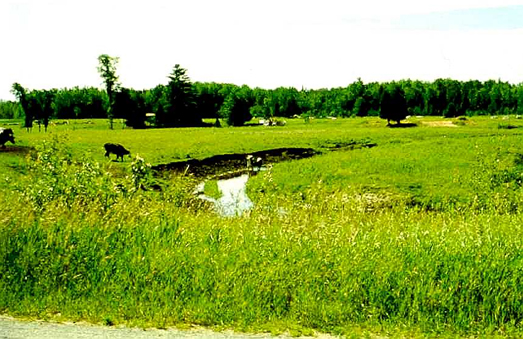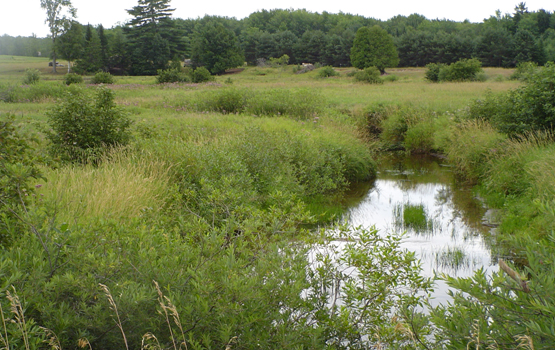Making a Difference: Impact of Cattle Exclusion
National Agriculture Information
- Agriculture
- Basic Information
- Where You Live
- Frequent Questions
- Sectors
- A to Z Subject Index
- Air
- Business Assistance
- Health & Safety
- Pesticides
- Site & Equipment
- Sustainability
- Water
- Laws & Regulations
- Resources
June 2006
Delta County Farm on Michigan's Bark River

July 1990 - Prior to Cattle Exclusion

July 2005 - After Cattle Exclusion
In 1990, Michigan Department of Environmental Quality (MDEQ) biologists and United States Department of Agriculture (USDA)-Soil Conservation Service (now Natural Resource Conservation Service) personnel identified substantial sedimentation problems at a farm along the Bark River in the Upper Peninsula. A Clean Water Act Section 319(h)-funded planning grant for the Bark River Watershed prompted Delta County Conservation District staff to work with the farmer to install an electrical fence to keep livestock from entering the river. In addition to the livestock at this farm, livestock were eventually excluded from two other locations in the Bark River watershed. Field inspections by MDEQ biologists in 2005 verified the recovery of the stream. No section 319(h) implementation grant funds were awarded.
![[logo] US EPA](../gif/logo_epaseal.gif)